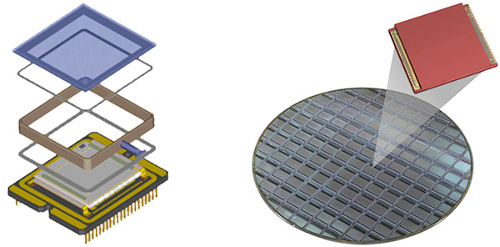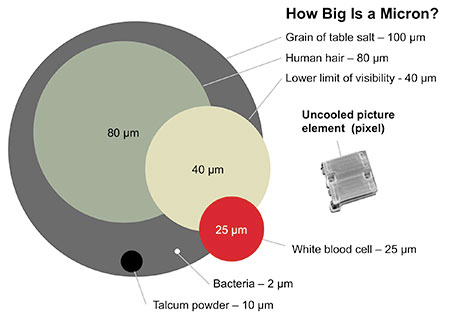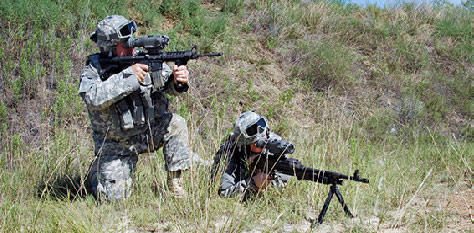 |
| May 20, 2014 | Volume 10 Issue 19 |
Designfax weekly eMagazine
Archives
Partners
Manufacturing Center
Product Spotlight
Modern Applications News
Metalworking Ideas For
Today's Job Shops
Tooling and Production
Strategies for large
metalworking plants
Raytheon thermal chips may just kill the flashlight

A historic building glows in this thermal image taken near Raytheon's Goleta, CA, laboratories.
Could this be the end of the flashlight?
New, low-cost chips for sensing thermal energy could lead to a raft of new night-vision products, engineers say, ushering in everything from smarter cars to handheld devices for spelunking.
A new technology used by Raytheon, called "wafer-level packaging," dramatically reduces the cost of making these thermal sensors. The advances could -- for the first time -- put a thermal weapons sight in the hands of every soldier in a platoon. But the commercial and law-enforcement uses are endless, too, developers say.
"Once it reaches a certain price point, you'll see it kind of popping up in a lot of different areas," says Adam Kennedy, a lead engineer at Raytheon Vision Systems. "That's just very, very exciting."
The chips "see" heat, meaning they work in total darkness. Older technologies work by amplifying tiny traces of visible light, such as starlight, or by illuminating scenes with an infrared lamp.
The uses go far beyond seeing in the dark. A car equipped with these sensors could determine whether a weight in the back seat is a child or a sack of groceries by looking at its heat signature, and then could adjust its airbags accordingly. A police officer could follow a fugitive by the heat of his footprints.
Wafer-level packaging uses the same process used to make computer chips. It combines thousands of tiny windows and thermal detectors, known as microbolometers, on the same flat surface. The design greatly simplifies construction.

Wafer level packaging uses simplified construction to make thousands of infrared, vacuum-packaged sensors at the same time.
"Initially, we had well over 15 parts assembled one at a time that made a packaged sensor. Now we have effectively two parts that can make hundreds or even thousands of parts at the same time," Kennedy says.
Each microbolometer is 17 microns wide, or one-fifth the width of a human hair. Each sensor contains hundreds of thousands -- up to tens of millions microbolometers -- and each pair of wafers can yield 10 to thousands of separate sensor chips.

Image showing micron size comparison and uncooled picture element.
The compact packaging also makes the sensors much more rugged, so they can stand up to the trials of the battlefield or being jostled around in a pocket as part of a future smartphone.
Raytheon has delivered more than 40,000 thermal weapons sights using the predecessor to wafer-level packaging, and only a couple were returned -- neither for problems with the sensors, says Mike Stokes, a technical director in Raytheon's Land Warfare Systems group.

Raytheon's thermal weapon sights provide soldiers enhanced capabilities so they can better detect and engage targets day or night.
"The bottom line is, a few returns in 40,000 is an extremely high reliability rate," Stokes says.
These small, high-performance and low-weight cameras are opening doors to new markets, including commercial automobiles.
Some cars already come with the option to include a small heads-up display that can detect hot objects in the dead of night, like deer or a person crossing the street. Smaller, more advanced chips could improve the resolution and make those systems more effective, Kennedy says.
Systems could also be used for traffic monitoring and safeguarding large parking lots.
The new uses are endless, Raytheon engineers say, and it's all due to the dramatic improvements in resolution, power, size, and cost.
"Doing a five- to six-times reduction in weight and power over a 10-year period is a pretty sporty timeline," Stokes says. "That's the type of performance that we've achieved in these programs."
Source: Raytheon
Published May 2014
Rate this article
View our terms of use and privacy policy
